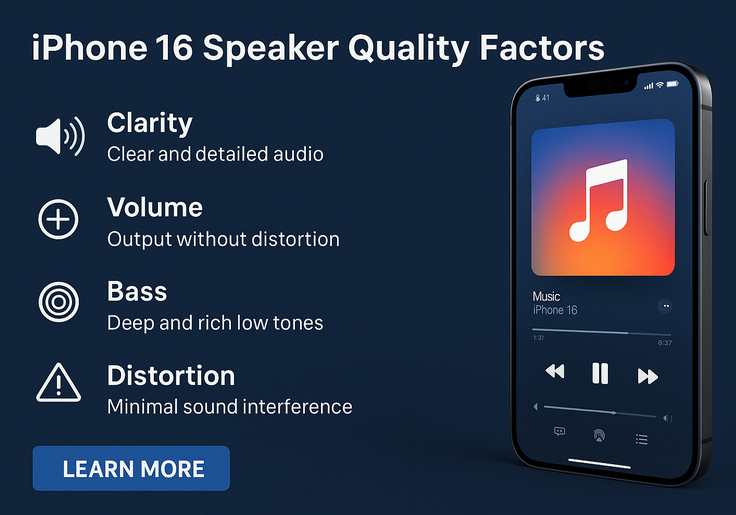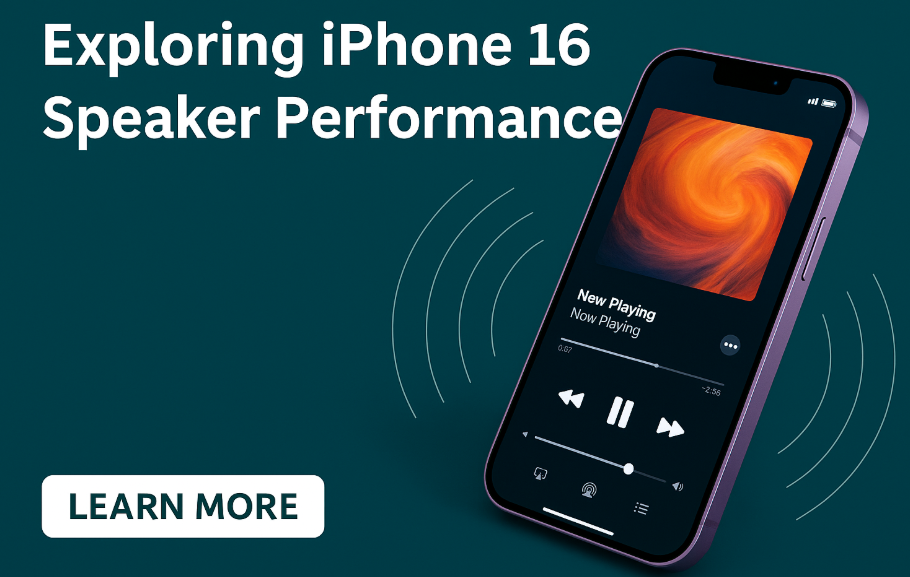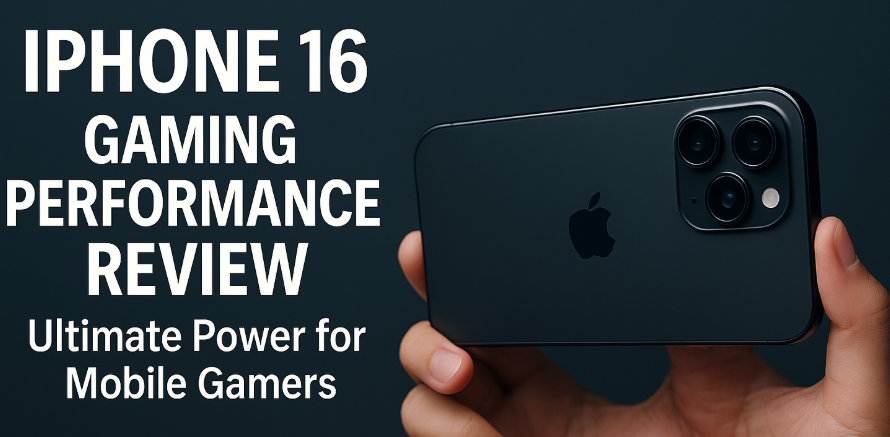With smartphones becoming essential media devices, audio quality plays a critical role in user experience. Whether you’re watching videos, listening to music, or on a call, speaker performance significantly affects overall satisfaction. Apple claims the iPhone 16 introduces improvements in speaker clarity, balance, and depth. But how does it actually sound in real-world usage?
In this post, we break down a comprehensive speaker quality test on the iPhone 16 and compare its performance to previous models, highlighting what Apple has truly achieved in its latest flagship device.
Why Speaker Quality Matters
Smartphone users rely on speakers for music streaming, hands-free calls, gaming, video content, and virtual meetings. Poor speaker quality often results in muffled dialogue, weak bass, or distorted highs, diminishing overall usability.
The iPhone 16 promises an enhanced audio experience. But what should you actually look for when evaluating speaker quality?
What to Look For in a Smartphone Speaker Test
-
Clarity: Are vocals, instruments, and speech well-defined?
-
Volume Output: Does the speaker produce loud, consistent sound without distortion?
-
Bass Depth: Are lower frequencies noticeable and rich?
-
High-End Fidelity: Can the speaker manage treble frequencies at higher volumes?
-
Spatial Awareness: Does the sound feel immersive or flat?
-
Balance: Can the speaker transition cleanly between music genres, speech, and notifications?
How We Tested the iPhone 16
To assess speaker quality on the iPhone 16, we conducted controlled tests using different music genres, podcasts, and YouTube videos across a range of volume settings.

Testing Methods:
-
Vocal Playback Test: We played high-resolution speech tracks to test mid-range clarity.
-
Bass Depth Evaluation: EDM and hip-hop tracks were used to examine low-end performance.
-
Volume Stress Test: We increased volume from 50% to 100% to evaluate distortion thresholds.
-
Instrument Separation: Classical and acoustic recordings helped test stereo field simulation.
-
Genre Versatility Test: Pop, rock, jazz, and gaming soundtracks were played for dynamic range consistency.
Test Results: What Stands Out
-
Clarity: The iPhone 16 delivers crisp and natural vocals, outperforming the iPhone 15 in mid and high frequency response.
-
Bass: Substantial bass improvement is evident. While not subwoofer-level, the iPhone 16 maintains punch and warmth across genres.
-
Volume & Distortion: Volume is louder than previous iPhones without major distortion, thanks to dynamic sound balancing.
-
Spatial Audio: Even without headphones, spatial audio enhancements create a wider soundstage in landscape mode.
What This Means for You
Whether you’re a music enthusiast, gamer, student, or casual user, here’s how these improvements enhance everyday use:
-
Watching YouTube or Netflix delivers more immersive dialogue and ambient sound.
-
Podcasts and audiobooks sound cleaner, even in noisy environments.
-
Mobile gaming feels more immersive with deeper sound positioning.
-
Music playback is balanced, regardless of genre or app.
Related iPhone 16 Optimization Guides
Enhance your overall iPhone 16 experience with these related tips:
Conclusion: The Audio Standard Just Leveled Up
With a focus on fidelity, spatial awareness, and distortion control, the iPhone 16 sets a new benchmark in smartphone speaker quality. Apple’s refined engineering shines across use cases whether you’re streaming music, catching up on podcasts, or watching content on-the-go.
This speaker quality test shows that iPhone 16 isn’t just louder it’s smarter and cleaner. It offers both technical improvements and noticeable gains in user enjoyment.







